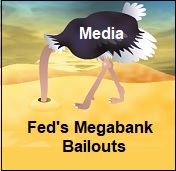-
Recent Posts
- Trump’s “Big Beautiful Bill” Is a Grotesque Giveaway to Fossil Fuel Billionaires While Adding $3.3 Trillion to Nation’s Debt
- Senator Chris Murphy Charges that Trump “Has Opened a Channel for Bribery”
- Congressman Casten: Trump’s Assault on the Rule of Law Is Causing Capital Flight Out of U.S. by Foreign Investors
- Trump’s Approval Rating Drops to 80-Year Low; IMF Says U.S. Tariffs Now Exceed the Highs During the Great Depression
- Nasdaq Has Lost More than 3,000 Points Since Trump’s First Full Day in Office in 2025; the Pain Has Barely Begun
- The Bond Crisis Last Week Was a Global No-Confidence Vote in U. S. President Donald Trump
- Trump’s Tariff Plan Guts $5 Trillion in Stock Value in Two Days; Senator Warren Calls for Emergency Action Before Markets Open on Monday
- Trump’s Attacks on Big Law, Universities, and the Media Have a Common Goal: Silence Dissent Against Authoritarian Rule
- Trump Administration Gives All Clear to Laundering Money through Shell Companies and Bribing Foreign Officials
- Four Megabanks on Wall Street Hold $3.2 Trillion in Uninsured Deposits – Which May Explain Senator Schumer’s Pivot to the GOP to Stop a Government Shutdown
- Here’s What Came Crashing Down Yesterday for Trump’s “Genius” Guy, Elon Musk: Tesla Stock, Access to Twitter (X), His Years of Secret Calls with Putin
- After Banning the Associated Press, Trump Is Now Targeting Specific Journalists That He Wants to See Fired
- Closely Watched Atlanta Fed Model Predicts Negative U.S. Growth in First Quarter
- Trump’s Gangster Diplomacy Makes Front Page Headlines Around the Globe
- Who Benefits Alongside Elon Musk If He Succeeds in Killing the CFPB: the Megabanks on Wall Street that Underwrite His Tesla Stock Offerings
- In Trump 1.0, the State Department Used Taxpayer Money to Publish a Book Elevating Elon Musk to a Superhero; It Was Funded by USAID, the Agency Musk Wants to Quickly Shut Down
- News Host Joy Reid Raises Threat of Trump Selling U.S. to Putin; Ten Days Later Her Show Is Cancelled
- Elon Musk’s DOGE Appears to Be Violating a Court Order; It Has Taken Down Hundreds of YouTube Videos that Educate Americans on How to Avoid Being Swindled
- Barron’s Releases Audio of Jamie Dimon Cursing Out His Workers at a Town Hall, as Dimon Plans to Dump Another One Million JPM Shares
- There’s One Federal Investigative Agency that Neither Trump nor Elon Musk Can Touch: It Just Opened an Investigation into DOGE
- Elon Musk’s Companies Were Under Investigation by Five Inspectors General When the Trump Administration Fired Them and Made Musk the Investigator
- Donald Trump Gives the Greenlight to Goldman Sachs and JPMorgan Chase to Return to Bribing Foreign Officials
- After Tech Geeks Built a Back Door to Loot Billions from FTX, Republicans Refuse to Investigate What Elon Musk’s Tech-Squad Did Inside the U.S. Treasury’s Payment System
- Former Prosecutor, Now U.S. Senator, Informs Tesla That CEO Musk May Be Violating Federal Law and to “Preserve All Records”
- Trump’s Hedge Fund Guy Is Now Overseeing the U.S. Treasury, IRS, OCC, U.S. Mint, FinCEN, F-SOC, and the Consumer Financial Protection Bureau
- As Elon Musk Begins Shutting Down Payments to Federal Contractors, a Strange Money Trail Emerges to His Operatives Inside the U.S. Treasury’s Payment System
- JPMorgan Chase Charged by Yet Another Internal Whistleblower with Cooking the Books
- We Asked Google’s AI Search Model, Gemini, Questions About the Fed and Wall Street Megabanks: It Got the Answers Dead Wrong
- With Trump and Melania’s Crypto Coins Likely to Raise Legal Challenges, Why Didn’t Trump Fire the SEC’s Inspector General in His Purge of IGs?
- Fossil Fuel Industry Could End Up Paying Tens of Billions for LA Wildfires and Deceiving the Public on Climate Change for Decades
- It’s Being Called the Biggest Grift by a President in U.S. History: Trump and First Lady Launch their Own Crypto Coins
- Trump Plans to Install a Fracking CEO to Head the Energy Department and Declare a National Emergency on Energy to Gain Vast Powers
- Fossil Fuel Money Played a Role in the Los Angeles Fires and the Push to Install Pete Hegseth as Secretary of Defense
- When It Comes to Wealth Retention in Retirement, Concrete May Be the New Gold
- Wall Street Watchdog Warns “Clock Is Ticking on a Coming Catastrophic Financial Crash”
- Wall Street Is Sending the Same Message to Americans on Fossil Fuel Financing that It Sent on Cigarettes: Drop Dead
- In a Six-Week Span, this Dark Pool with a Curious Past Traded 3.7 Billion Shares
- Wall Street’s Lobby Firm Hired Eugene Scalia of Gibson Dunn to Sue the Fed for Jamie Dimon
- Postmaster General Louis DeJoy Made $561,051 in Compensation in 2024, as Mail Costs Spiked and Delivery Deteriorated
- Fed Chair Jay Powell Sends a Bold Message to Trump and Tanks the Dow by 1123 Points
- The Head of Fixed Income at T. Rowe Price Makes the Scary Case for the 10-Year Treasury to Spike to 6 Percent
- $663 Billion in Cash Assets Have Gone Poof at the Largest U.S. Banks
- Donald Trump to Ring Bell at New York Stock Exchange Today as Hit List Posters Appear in Manhattan Targeting Wall Street CEOs
- Trump Has a Slush Fund to Prop Up the Dollar – Will He Use It to Prop Up Bitcoin Instead?
- A CEO Assassination; a Billionaire Heiress/NYPD Commissioner; a Secret Wall Street Spy Center – Here’s How They’re Connected
- Despite More than 1600 Tech Scientists Signing a Letter Calling Crypto a Sham, Trump Names a Crypto Cheerleader for SEC Chair
- The Fed Rings a Warning Bell: Hedge Funds and Life Insurers Are Reporting Historic Leverage
- Trump’s Nominee for FBI Director, Kash Patel, Has Businesses Financially Intertwined with Trump
- Donald Trump Is at Risk of Getting Named in a Fossil Fuels Conspiracy Lawsuit
- Trump Is Having Difficulty Getting a Lawyer to Accept the Nomination for SEC Chair: Here’s Why
Search Results for: Federal Reserve
With Crypto Bank, SoFi, the Fed Is Setting the Stage for the Same Disastrous Decision It Made with Citigroup in 1999
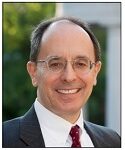
By Pam Martens and Russ Martens: November 29, 2022 ~ If there is one person in America who comprehensively understands the threats to the U.S. banking system, it is Arthur E. Wilmarth, Jr., author of the 2020 seminal book, Taming the Megabanks: Why We Need a New Glass-Steagall Act. Wilmarth is Professor Emeritus of Law at George Washington University Law School and has published more than 40 law review articles and book chapters in the fields of financial regulation and American constitutional history. Wilmarth had this to say about the way the Fed allowed a crypto outfit, SoFi, to scoop up a federally-insured bank in February of this year: “The San Francisco Fed relied on the same five-year transitional exemption in the BHC Act [Bank Holding Company Act] to allow SoFi to acquire Golden Pacific Bancorp and its national bank subsidiary despite SoFi’s nonconforming crypto trading activities. I find it astonishing and … Continue reading
Quietly, the Fed Releases Its Financial Stability Report and Lines Up a Scapegoat
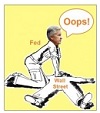
By Pam Martens and Russ Martens: November 7, 2022 ~ One minute after the stock market closed on Friday, the Federal Reserve mailed out a link to its newly-released Financial Stability Report to folks who have signed up to get press releases from the Fed. For those of you who have been reading our reports on the Fed for years – its unaccountable money printing and bailouts of Wall Street, the opaque activities of the trading floors owned by the New York Fed, its unchecked conflicts of interest, and its brazen, and as yet unprosecuted, trading scandal – you might suspect that the Fed would have pulled a lot of punches in its “Financial Stability Report.” You would be correct. On the topic of derivatives, which remain the greatest risk at the mega banks on Wall Street, the word “derivatives” is mentioned just eight times in the report – with little … Continue reading
An Economist’s Chart Goes Viral: Shows Main Source of Inflation

By Pam Martens and Russ Martens: November 4, 2022 ~ On April 21 Josh Bivens posted a titillating analysis on the Working Economics Blog. Bivens has a Ph.D. in Economics from the New School for Social Research and is the Director of Research at the Economic Policy Institute. The blog post was titled: “Corporate profits have contributed disproportionately to inflation. How should policymakers respond?” Included in the blog post was a graph showing that corporate profits account for 53.9 percent of the recent rise in inflation versus an average of 11.4 percent for the period 1979 through 2019. (See above chart.) Bevins’ chart made it into the hands of Congresswoman Katie Porter, who blew it up into a giant poster and explained its significance during a hearing before the House Subcommittee on Economic and Consumer Policy on September 22. The hearing was titled: “Power and Profiteering: How Certain Industries Hiked Prices, … Continue reading
Fed Chair Powell Sends Stocks on a Wild Ride; Says “Premature to be Thinking about Pausing” Rate Hikes
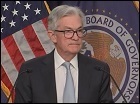
By Pam Martens and Russ Martens: November 3, 2022 ~ The Fed released its FOMC decision to raise interest rates by 0.75 percent at 2 p.m. yesterday, bringing its benchmark Fed Funds rate to a range of 3.75 to 4.00 percent. The decision contained this statement: “In assessing the appropriate stance of monetary policy, the Committee will continue to monitor the implications of incoming information for the economic outlook. The Committee would be prepared to adjust the stance of monetary policy as appropriate if risks emerge that could impede the attainment of the Committee’s goals.” That statement was greeted as bullish by the stock market. As Fed Chair Jerome Powell’s press conference started at 2:30 p.m., the Dow had soared by 277 points. By 2:34 p.m., the Dow was up 400 points. But things dramatically changed when Powell started taking questions from the press. By 3:15 p.m. when the press conference … Continue reading
The Fed’s Trading Scandal Broadens into a Scandal with the Mega Banks It “Regulates”

By Pam Martens and Russ Martens: October 24, 2022 ~ Last Thursday, Jeanna Smialek, who reports on the Fed for the New York Times, broke the news that the President of the St. Louis Fed, James Bullard, gave a private, invitation-only briefing on October 14 to clients of Citigroup – a Wall Street megabank that is supervised by the Fed and which received the largest bailout from the Fed from 2007 to 2010 in global banking history – a cumulative sum of $2.5 trillion in secret loans according to a government audit. Smialek noted in her article that “About 40 people attended the event, which had a formal agenda and was advertised to Citi clients.” Bullard answered questions from attendees, according to Smialek’s reporting. Bullard is a voting member of the Fed’s Federal Open Market Committee and has access to insider information on the Fed’s market-moving monetary policy actions. Bullard would … Continue reading
Three Business Days after Credit Suisse Was Named “Credit Derivatives House of the Year,” Its Own Credit Derivatives Blew Out

By Pam Martens and Russ Martens: October 18, 2022 ~ Credit Suisse presents a cautionary tale about creating so much innovation in the realm of credit derivatives that one gets named “Credit Derivatives House of the Year.” That award might sound like a good thing to traders who make their living cooking up and trading exotic derivatives but it might sound like a very bad thing to pension funds and mutual funds who own big chunks of the stock and bonds of that bank and remember how credit derivatives blew up much of Wall Street in 2008. On September 28, Risk.net named Credit Suisse the “Credit Derivatives House of the Year.” Three businesses days later, Credit Suisse saw its own Credit Default Swaps blow out to more than 300 basis points and some of its own bonds trade at 63 cents on the dollar. Simultaneously, its shares traded at an intraday … Continue reading
Atlanta Fed President Bought Low and Sold High in 2020 as the Fed Bailed Out Wall Street; Then He Failed to Report those Trades
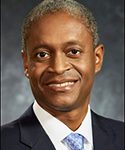
By Pam Martens and Russ Martens: October 17, 2022 ~ It was one year ago that Wall Street On Parade raised a multitude of red flags about Raphael Bostic, the President of the Atlanta Fed. We have published the entirety of that article below so that our readers can see just how long it took both Bostic and the Atlanta Fed to come clean with the American people about his trading on Wall Street. On Friday, Bostic released a seven-page statement in which he owned up to the following: failing to list a multitude of trades that were conducted on his behalf by trading firms on Wall Street over a period of five years; failing to properly report income on his assets on his financial disclosure forms; trading during blackout periods when trading was barred by the Federal Reserve; providing inaccurate values on his financial disclosure forms. The upshot was that … Continue reading
Nomi Prins’ New Book: “No One Wanted to Call the Fed’s QE a Ponzi Scheme. But It Was.”

By Pam Martens and Russ Martens: October 11, 2022 ~ Wall Street veteran Nomi Prins’ new book is being released today with a title that should give every member of the Senate Banking and House Financial Services Committees pause: Permanent Distortion: How the Financial Markets Abandoned the Real Economy Forever. The book does what neither of these Committees has done for the American people. It explains how the financial crash of 2008 unleashed an unbridled and unaccountable Fed as Wall Street’s permanent sugar daddy, distorting market functioning with its perpetual money spigot to the point that markets no longer function as a pricing mechanism or efficient allocator of capital but more along the lines of a Ponzi scheme for the rich. Prins writes: “Once central banks unleashed monetary policy to accommodate mega-banks, subsidize Wall Street financiers, and bolster global markets, the very idea of free and open markets and laissez-faire investing … Continue reading
All Eyes Are on Credit Suisse; But Media Blacked Out Data from the New York Fed Suggest Contagion from Nomura Is Another Threat
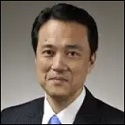
By Pam Martens and Russ Martens: October 7, 2022 ~ Nomura Holdings is tiny compared to the mega banks on Wall Street. According to its website, it had just $384 billion in assets as of March 31, 2021. On the same date, JPMorgan Chase had $3.2 trillion in assets. But for reasons that neither the Federal Reserve nor Congress have yet to explain, a unit of Nomura was allowed to borrow trillions of dollars in emergency repo loans from the Fed beginning on September 17, 2019 – months before there was any COVID crisis anywhere in the world. The chart above shows that in the last three months of 2019, Nomura borrowed $3.7 trillion cumulatively under the Fed’s emergency repo loan program, topping the amount borrowed by JPMorgan Chase by $1.11 trillion. The loan amounts come directly from the emergency repo loan data being released quarterly by the New York Fed, … Continue reading
Credit Suisse and the Fed’s Plunge Protection Team

By Pam Martens and Russ Martens: October 4, 2022 ~ At 6:53 a.m. this morning (ET), Dow futures were up 454 points. That followed the Dow Jones Industrial Average gaining 765 points yesterday. No one who has been a trader on Wall Street or a stock broker for multiple decades believes this rally is real. Wall Street veterans are thinking that either the Fed’s plunge protection team or the Treasury’s plunge protection team is behind the rally. Equally unbelievable, as the chart above indicates, is the fact that the major mega banks on Wall Street closed in the green yesterday. Many of these are counterparties to Credit Suisse derivatives and thus subject to the potential for contagion. Until everyone who works on Wall Street is 25 years old and too young to remember what happened in 2008 after Citigroup began to quake, Wall Street traders are not going to believe that … Continue reading

